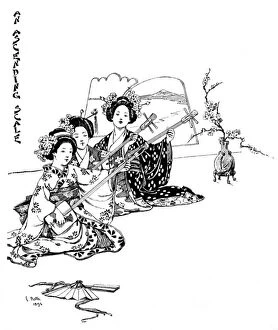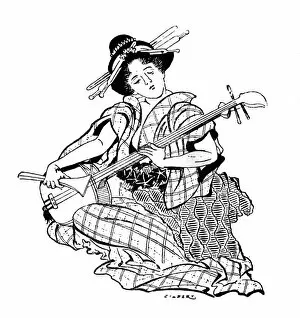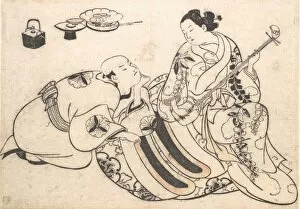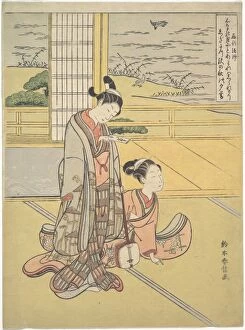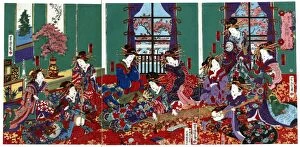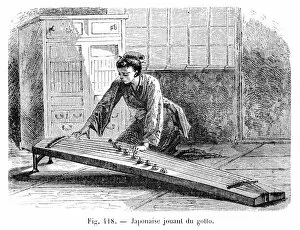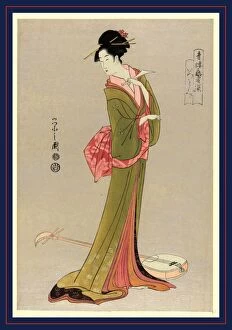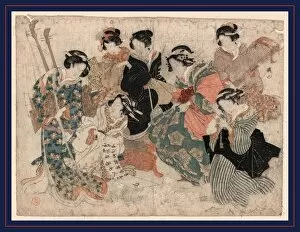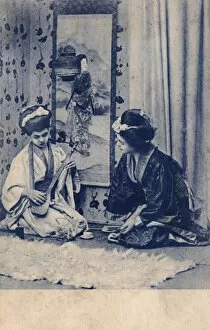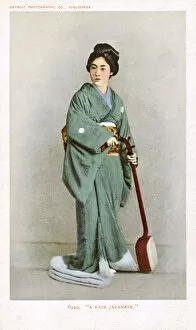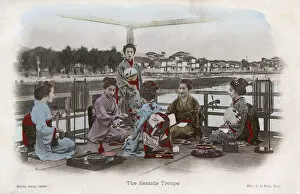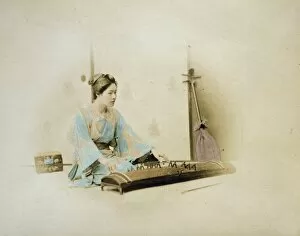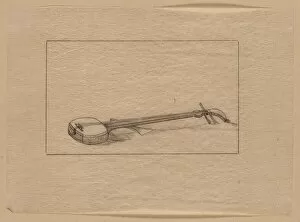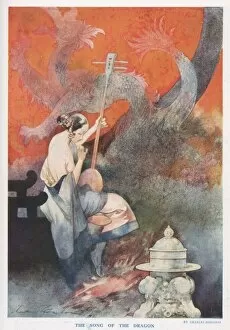Shamisen Collection (page 6)
The shamisen, a traditional Chinese musical instrument, has found its way into the hearts and culture of Japan
For sale as Licensed Images
Choose your image, Select your licence and Download the media
The shamisen, a traditional Chinese musical instrument, has found its way into the hearts and culture of Japan. Geishas gracefully strumming the strings of the shamisen create an enchanting melody that captivates all who listen. In this captivating image, a Japanese geisha delicately plays the shamisen, transporting us back to the early 1900s when this beautiful art form thrived. Stepping into a bustling musical instrument shop in Japan, one can witness rows of meticulously crafted shamisens waiting to be played by skilled musicians. The triptych woodblock print depicting cherry blossom entertainment showcases the harmonious blend between nature's beauty and melodic tunes produced by these instruments. Intriguing glimpses into Japanese history reveal fascinating scenes from centuries ago. A traditional woodblock print portrays a female musician playing her shamisen while three samurai intently listen. As they enjoy her performance, a kamuro gracefully brings food on a tray, adding an element of elegance to this moment frozen in time. Traveling further back in time to late 17th century Yoshiwara reveals another facet of life where street scenes come alive with music and merriment. Hishikawa Moronobu's depiction captures the essence of daily life as courtesans play their beloved shamisens amidst vibrant surroundings. The legacy of the shamisen lives on through generations as it continues to inspire artists and musicians alike. Its timeless charm resonates not only within Japan but also across borders, leaving an indelible mark on cultures worldwide.



